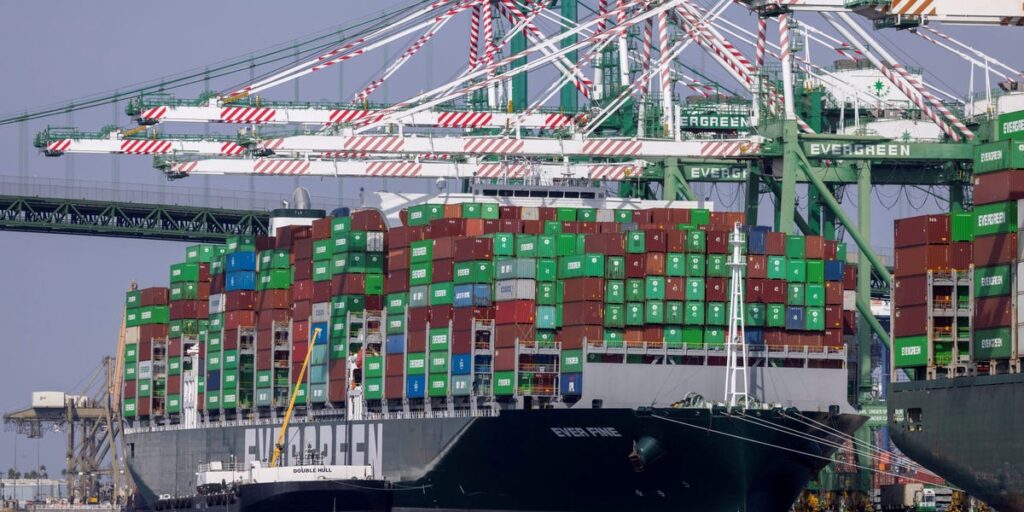Tariff dodging could deprive the US government of $40 billion a year in revenue, as companies may already be finding ways around President Donald Trump’s new import levies this year, wrote Goldman Sachs analysts.
The warning comes after Trump’s second administration imposed a blanket 10% baseline tariff on all foreign imports, additional varying rates on specific countries, and a series of product-specific duties, including on automobiles.
“The variation in tariff rates across countries provides scope for transshipment of goods through bystander countries with lower tariff rates (and steeper tariffs on transshipped goods may prove hard to implement),” the analysts wrote in a Tuesday note.
Foreign exporters and US importers are incentivized to underreport the value of US imports to customs officials, they added.
If exporters shift shipments and underreport values in line with historical patterns, Goldman estimates more than $200 billion in annual imports could be affected. That level of dodging would slash tariff revenue by roughly $40 billion versus a full-compliance scenario.
Treasury Secretary Scott Bessent said last month that tariff revenue from Trump’s tariffs could be over $500 billion a year.
Data gaps point to tariff dodging
Trade data is already flashing warning signs.
In particular, foreign companies in Vietnam have simultaneously upped both imports from China and exports to the US since the start of the year.
“Furthermore, product-level data point to a higher-than-normal correlation between Vietnamese imports from China and Vietnamese exports to the US, a pattern consistent with rerouting,” Goldman’s analysts wrote.
However, some of that may reflect genuine investment in new factories as supply chains reconfigure to the new global trade landscape, they added.
There are also signs that foreign exporters are underreporting the value of imports into the US.
Historically, US-reported imports from China exceeded China’s reported exports to the US by about $6 billion a month, partly because of statistical quirks. That relationship flipped during the 2018 to 2019 trade war, and the discrepancy has widened by an additional $4 billion per month this year.
That’s despite Washington starting to close a key loophole this spring: the “de minimis” exemption that had allowed packages worth under $800 to enter the US without duties and full customs clearance.
The end of that exemption should have narrowed the reporting gap — but its growth is a sign that underreporting is back, according to Goldman.
Pricing data also hints at tariff dodging, as unit prices for several categories — including cast iron bathtubs from China and gas ranges from Thailand — have dropped steeply since April, Goldman’s analysis found.
“Unit prices for some US imports have been cut by larger amounts than can be plausibly explained by lower production costs, suggesting multinational companies may be avoiding tariffs by lowering reported US import prices,” the analysts wrote.
The Trump administration has rolled out new measures to curb tariff evasion, including a 40% levy on transshipped goods and a dedicated Trade Fraud Task Force.
So while Goldman’s estimates of revenue leakage are potentially huge, “the impact could be smaller if the recent actions by the Trump administration to minimize evasion prove effective,” the bank’s analysts wrote.
Read the full article here


